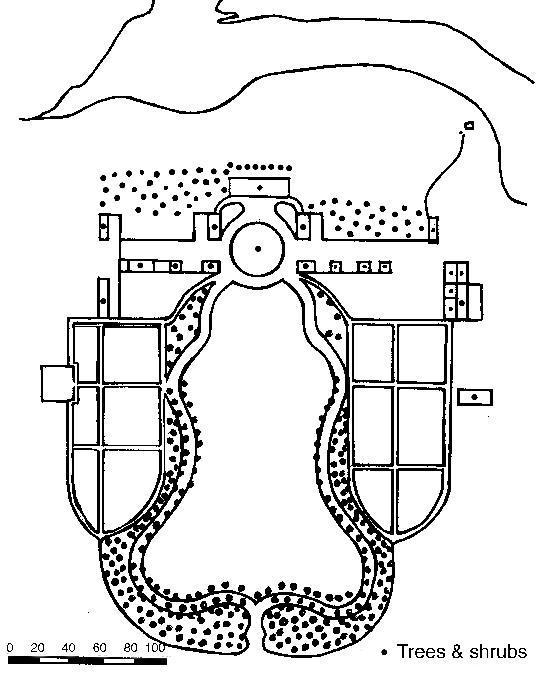Georgian and Federal Neoclassic Architecture –
The English Landscape Garden
Towards the latter part of the 18c there is a new school of thought, Romanticism. As a philosophy, Romanticism is a reaction to the failures of rationalism, preferring to view the world subjectively through the senses. Pre-industrial, non-European peoples are viewed as desirably exotic and more “natural”. The recently found ruins of Pompeii inspire Romantic artists to feel affinity in antiquity, rediscovering and reviving an unlimited number of historic, and eclectic styles, which persist into the twentieth century. The interest in the natural world during the Romantic era is a driver in reshaping garden design and consequently in the evolution of the landscape profession.
By 1760, this new Romantic world-view encourages colonists to adopt the English Garden Style, although this is not fully realized until the 1830s. The earliest gardens are a hybrid of the older Renaissance forms combined with newer naturalistic styles – The English Landscape School and the Picturesque (Pregill, 1993). Three gardens showing the progression in style of this period are the Paca Garden in Annapolis, Mount Vernon, George Washington’s home, and the Thomas Jefferson home at Monticello.
 | Fig. 9 |
The grounds at Mount Vernon and Monticello are the earliest examples of the English Landscape style. Mount Vernon (below) is more successful in the garden detail. The rectangular planting beds (originally kitchen gardens) have one curved end to transition to the serpentine walks. The house is approached along a serpentine drive, bordered with symmetrically planted native trees and low shrubs. Between the symmetric drives is the visual focal point, the bowling-green lawn, ”a carpet of the most beautiful velvet”, (Rogers, 2001). A deer park by the river is separated from the lawn by a ha-ha wall (a ditch, to keep out grazing livestock, without interrupting the view from the mansion).
Monticello (1776-1826, Jefferson’s residence,) is an elegant example of the Georgian architectural style, executed in brick with white wood trim. It shows the influence of Andrea Palladio (1508-1580), but also Jefferson’s desire for utility and comfort. Its’ masterful site plan relies on the natural landscape for inspiration. As such, it is an example of the ferme ornee and a precursor of the Romantic design movement of the 1840s. Jefferson’s design (below) differs somewhat from the English style in his preference for more densely planted trees, forming an uninterrupted canopy, with thickets of native shrubs below (Tischler, 1989). It is an early example of the blending of flowers, shrubs, and trees into a park-like setting. The arbitrarily placed oval planting beds at Monticello are the least successful element, seeming to ‘float’ in the lawn, anticipating the later Gardenesque style.
Mount Vernon garden plan
 | Fig. 10, Mount Vernon drawing from Samuel Vaugn plan, 1787 |
Monticello garden plan
 | Fig. 11, Monticello drawing from restoration plans by the Garden Club of Virginia 1939-41 |
Elsewhere in the colonies, the English Landscape style, in an even more complete form, is first used in Rural Cemeteries, using curvilinear paths, monuments with elegiac inscriptions, temples, grottoes, urns, and texts in stone, (Loudan’s book on more natural cemetery layout in 1843 may have accelerated this trend.) By 1878, the design of Rural Cemeteries in America is the most advanced in the world (Stuart, 1988).
